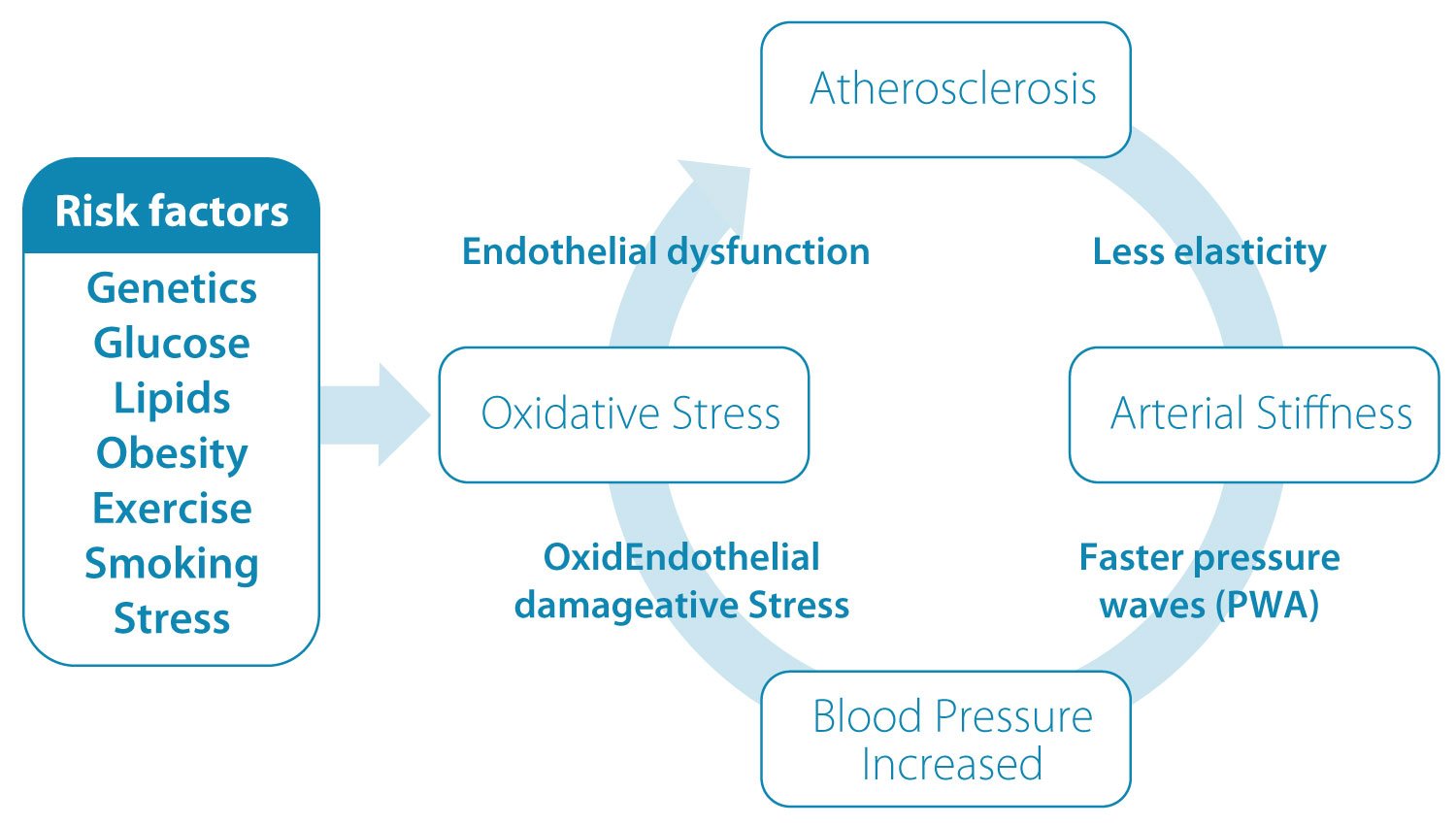How does vascular structural and functional change happen
Cycle of increasing blood pressure due to structural and functional vascular changes.
(Modified from JMA Journal: Volume 4, Issue 2)
Endothelial dysfunction: Vascular structural and functional alterations during aging.
Modified from: Unveiling the Role of Inflammation and Oxidative Stress on Age-Related Cardiovascular Diseases
Vascular aging is associated with critical modifications of the vascular wall such as endothelial dysfunction and increased arterial thickness and stiffness. Endothelial dysfunction includes reduced vasodilatory and antithrombotic properties, with increased oxidative stress and inflammatory cytokines, increasing the risk of atherosclerosis and thrombosis. Furthermore, the endothelial barrier becomes porous and vascular smooth muscle cells migrate to subendothelial spaces and deposit extracellular matrix proteins resulting in the thickening of the tunica intima. Central arterial stiffness is related to the loss of elastic fibers and the increase of collagen accumulation in the vessel wall, which deteriorates vascular functionality. Endothelial dysfunction and arterial stiffness are mediators connected closely in vascular dysfunction during aging. If the artery is more rigid, greater will be the exposure of the endothelium to hemodynamic load, promoting endothelial activation, inflammation, and oxidative damage. Antioxidant therapies have been shown to attenuate aging-induced changes through endothelial dysfunction and changes in the extracellular arterial matrix that cause central arterial stiffness.
Arterial stiffness - Increase in CVD risk: ⁹ ¹¹ ¹²
Arterial stiffness affects the brain and kidney function by increased pulsatile loads within microvascular beds
Left ventricular load is increased
Excessive pressure pulsatility decreases diastolic pressure – required for coronary perfusion
The insidious feedback loop – stiffness remodels small arteries inwards, increases resistance, increases blood pressure, increases central artery stiffness
Arterial stiffness increases stroke risk ¹³
Evidence confirms that measuring of arterial stiffness and wave reflections in clinical practice have predictive value for CV events, therefore supporting preventative healthcare.¹¹ ¹⁵
How to improve arterial stiffness
Persistent increased arterial stiffness should be treated as soon as possible to reduce CVD risk. Nitric Oxide regulates endothelial dysfunction.¹⁶ Activities that release Nitric Oxide supports vasodilation and improves arterial dysfunction.
Pharmacological
Vasoactive antihypertensive agents affect Augmentation Index and blood pressure.
Examples are:
Renin-angiotensin-aldosterone Inhibitors (ARB)
ACE inhibitors (ACEI)
Calcium Channel blockers (CCB)
Indapamide and Perindopril combination lowered brachial BP and pulse pressure more than atenolol (REASON study)
ß-Blockers – Vasodilating compared to non-vasodilating ß-Blockers reduce central systolic BP and AI
ß-Blockers increase central systolic BP or decrease central-to-peripheral BP amplification through slowing of the heart rate and increasing peripheral vasoconstriction
ß-Blockers should not be considered with older patients for antihypertension; in younger patients ¹⁷
Statin use improve cBP and brachial BP ¹⁸


